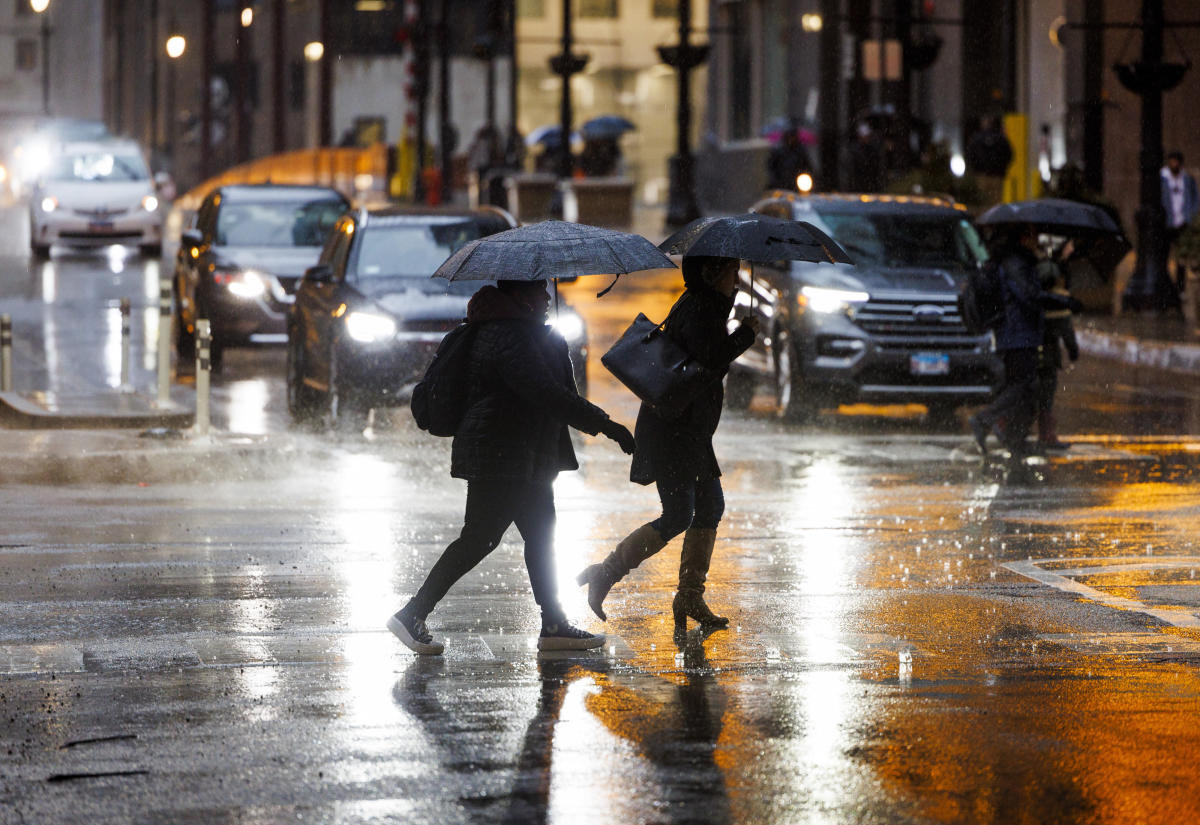
When Chicagoans woke up to a sunny start to the week with a high temperature forecasted above 80 degrees — or as one meteorologist said, “definitely on the unseasonably warm side” — some might have hoped it’s a harbinger of a mild winter.
But scientists warn that may not be the case.
Measurements indicate that a slowly developing La Niña will affect winter conditions in most of the country. There’s a 60% chance of it emerging somewhere between September to November, with the expectation that it will continue through March, according to the National Weather Service’s Climate Prediction Center.
For Chicago and the rest of Illinois, this may mean a colder and wetter winter.
“There’s a lot of variability between La Niña years,” cautioned Trent Ford, the Illinois state climatologist. “Depending on what other (weather patterns) are operating and what tends to play a larger role during the winter, we could still see a lot of different variations on what La Niña actually brings.”
What is a La Niña?
Occurring on average every two to seven years, La Niña is a natural climate phenomenon where sea surface temperatures are colder than average in the central and eastern Pacific Ocean near the equator, according to the weather service. Scientists at the Climate Prediction Center announced last week that this La Niña is expected to develop later this fall, usually causing a “more northerly storm track” in the winter months.
La Niña can have a significant effect on weather, even in the Midwest — particularly in the winter. Unusually cool waters can shift jet stream patterns, Ford said, leading to colder and wetter conditions in the northern part of the continental U.S., especially the Pacific Northwest and Great Lakes region.
Meanwhile, states bordering the Gulf of Mexico, Texas and southern New Mexico are more likely to experience conditions that are drier and warmer than average. Brad Pugh, operational drought lead with the National Oceanic and Atmospheric Administration’s Climate Prediction Center, said drought conditions will likely continue or worsen in the central and southern Plains.
“Unfortunately, after a brief period in the spring of 2024 with minimal drought conditions across the country, more than a quarter of the land mass in the continental U.S. is currently in at least a moderate drought,” he said. “And the winter precipitation outlook does not bode well for widespread relief.”
El Niños, on the other hand, have opposite effects, causing warmer and dryer winters in the northern U.S. and Canada. Last winter, the city experienced a strong El Niño.
What does it mean for Chicago?
If La Niña becomes the dominant force this winter, Ford said there’s a strong chance that Chicago will be wetter than normal from December through February. In Chicago, average total precipitation in winter is about 6 inches — “the driest season by far,” Ford noted. That extra precipitation doesn’t necessarily mean more snowfall, he added.
The temperature signal is weaker, but Ford said there’s a tendency for more cold outbreaks during La Niña winters. The average winter temperature in Chicago is about 28 degrees, he said.
“If La Niña is playing a consistent role, where we’re seeing colder air, it does increase the chance that we see more cold air outbreaks and possibly more chances for heavier snow,” he said.
However, Ford said there’s a big caveat to these predictions — lots of other events can affect the weather. Everything from sea ice in the Arctic to Eurasian snow cover are much less predictable than La Niña but can have far-reaching weather implications.
He also said there’s a long-term warming trend in the region due to climate change, and that this La Niña is “moderate” or “medium strength.” Generally, the stronger the La Niña, the more likely it is to follow the colder, wetter pattern.
“We can have those other features play a larger role, and maybe could outweigh or modify the influence of La Nina,” Ford said. “Those things are hard to predict more than maybe a week or so ahead of time.”
EMEA Tribune is not involved in this news article, it is taken from our partners and or from the News Agencies. Copyright and Credit go to the News Agencies, email news@emeatribune.com Follow our WhatsApp verified Channel



